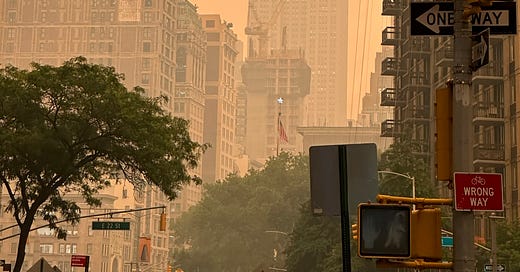How Wildfire Smoke Affects Kids
What we know and don't know — and how to keep your children safe.
I’m running this week’s paid newsletter two days early in light of the many questions I’m getting from parents in the Northeast about managing the wildfire smoke.
As I gaze outside today in New York, I feel like I’ve jumped into an alternate universe. The sky is yellow-orange and the sun looks like a basketball. The smoky smell is overwhelming. Our school isn’t letting kids outside for recess.
Wildfire smoke isn’t something we regularly encounter on the East Coast, but it has been a problem for many years on the West Coast, where an estimated 7. 4 million children are affected by wildfire smoke each year. Due to climate change, wildfires have been increasing in frequency, size and intensity, too.
What do we know about how smoke exposure — even over a day or two — affects children, and what can we do to keep our kids safe?
Wildfire smoke is dangerous because it contains extremely small particles — a higher proportion of very small particles compared with typical ambient pollution — that can penetrate deeply into the lungs, as well the eyes, nose and throat. There, the particles can cause inflammation and irritation. Wildfire smoke can contain other toxic gases, too.
Kids are especially at risk for a few reasons.





